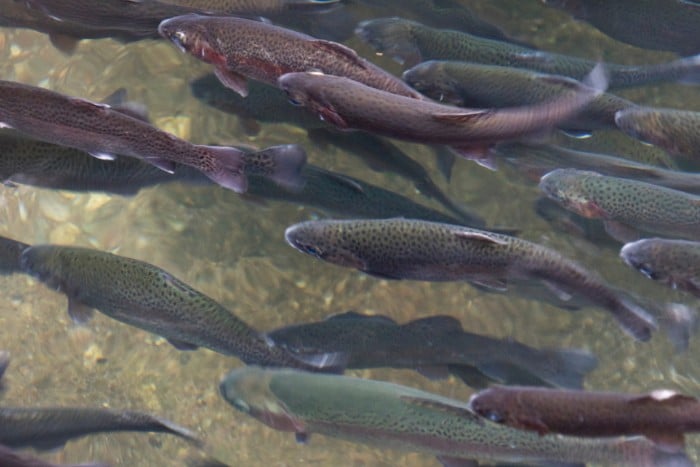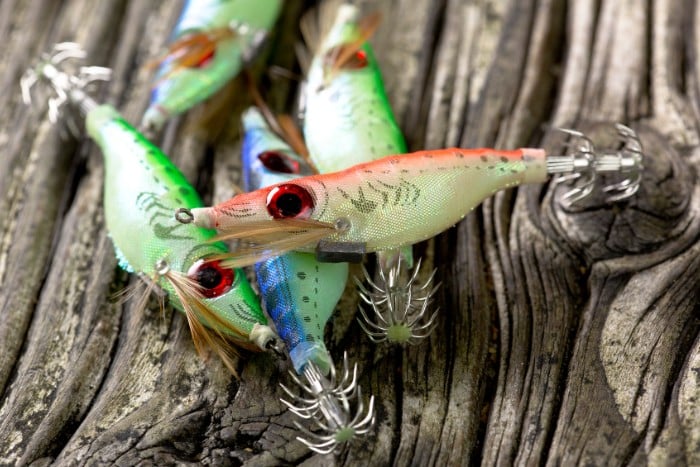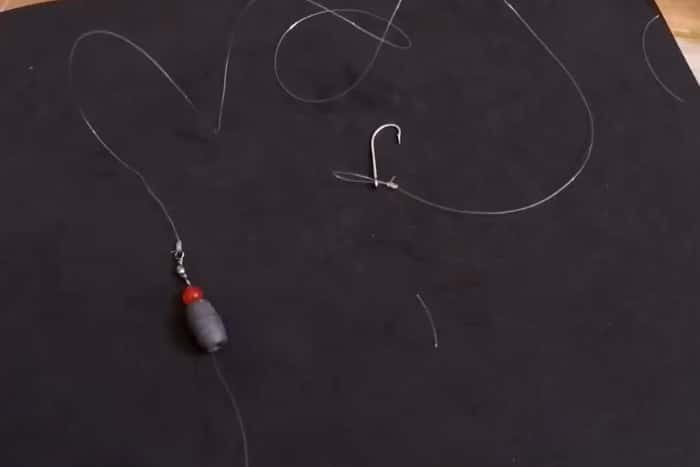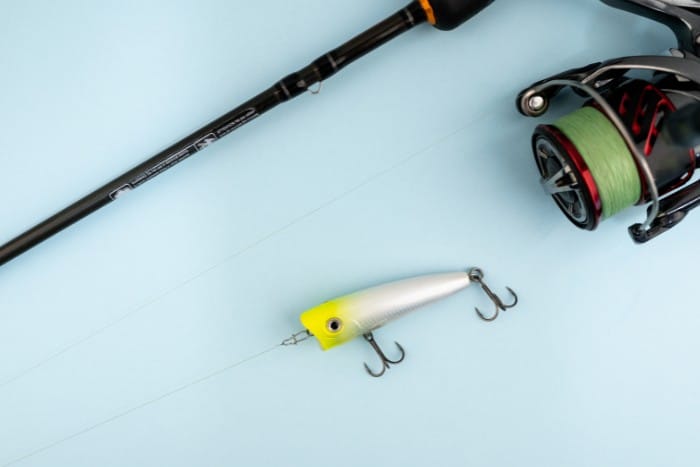Bank fishing for trout takes a lot of patience, knowledge, and experimentation. If you want to catch more tricky trout this season, using the right rig will help you achieve this goal.
Floats and topwater lures are essential while the fish are feeding close to the surface, while weighted rigs and sinking lures will catch the fish when they are lurking deep below and chasing other bait fish. Bank fishing for trout requires the proper rig to match what the fish are feeding on.
Below are a few different rigs to catch trout while fishing from the bank. Each rig can be experimented with to find a comfortable technique for you and your target fish.
9 Rigs to Catch More Lake Trout From The Bank
Below are the nine best fishing options for trout from the bank in any pond, lake, or river.
Some rigs are better in certain situations than others, and some might even surprise you if you haven’t tried them before.

1. Use an Adjustable Slip Float
An adjustable slip float rig is a great way to fish for trout in still or slow-moving water. This rig consists of a slip float, a leader, a hook, and bait.
The slip float allows you to adjust the depth at which the bait is presented, which is crucial when fishing for trout.
To set up this rig:
- Tie a slip knot onto the mainline.
- Thread the slip float onto the mainline and add a bobber stop above the slip float. The bobber stop can be adjusted to set the depth.
- Tie a leader to the mainline, and tie on the hook.
Worms, salmon eggs, or Powerbait are popular bait choices when fishing with an adjustable slip float. Once the rig is set up and baited, cast the line out and wait for the trout to take the bait.
When a trout takes the bait, the slip float will go under the water, signaling a bite.
2. Use Flies In Moving Water
Flies are a classic and effective way to catch trout, particularly in rivers and streams. This rig consists of a fly rod, fly line, leader, tippet, and fly.
The type of fly used will depend on the water conditions and the behavior of the trout in that specific location.
However, if you don’t want to leap fly fishing, a clear adjustable float can be filled partially with water. A 4+ foot leader of fluorocarbon following it will let you use flies even with a traditional fishing rod.
A dry fly, nymph, or streamer are popular choices when fishing with flies. When casting the line, aim for areas where the trout will likely feed, such as in the riffles or behind rocks.
When the fly hits the water, use a combination of short strips and long pauses to mimic the movement of a live insect. You will feel a tug on the line when a trout takes the fly.
3. Use a Suspended Jig
Using a suspended jig is a popular way to fish for trout in deeper water. This rig comprises a jig head, a soft plastic lure, and a leader.
The jig head is typically weighted to help it sink, and the soft plastic lure mimics the movement of a live baitfish.
To set up this rig:
- Tie the jig head onto the end of the main line.
- Tie on a leader using a suitable knot.
- Attach the soft plastic lure to the jig head.
Using scented soft plastic lures or grubs is popular when fishing with a suspended jig. Cast the line out and let the jig sink to the desired depth.
Slowly reel in the line, using a combination of jerks and pauses to mimic the movement of a live baitfish. You will feel a tug on the line when the trout takes the jig.

4. Use A Drop Shot To Fish Close To The Bottom
The drop shot rig is versatile and practical for catching trout from the bank. It consists of a hook tied onto a leader with a weight at the bottom.
The weight is tied onto the leader at a distance of 12-18 inches from the hook, and the hook is tied onto the leader about 12 inches above the weight.
This rig allows the angler to fish the bait off the bottom while keeping it in the strike zone. To use the drop shot rig for bank fishing, cast it out and let it sink to the bottom.
Once the weight hits the bottom, lift the rod tip to lift the bait. Then, let the bait sink back down and repeat the process.
This technique is especially effective for fishing in deep pools or slow-moving currents.
5. Carolina Rigs
The Carolina rig is another effective rig for bank fishing for trout. The sliding sinker is threaded onto the main line, followed by the swivel.
The leader is tied onto the swivel, and the hook is tied to the end of the leader. To use the Carolina rig for bank fishing, cast it out and let it sink to the bottom.
Then, slowly reel in the slack, lifting the rod tip to move the bait along the bottom. The Carolina rig is effective for covering a large area of water and is especially useful for fishing in deeper water.

6. Split Shot Rig
The split shot rig is a simple and effective option for bank fishing for trout. It consists of a hook tied onto a leader, with split shot weights attached to the line above it.
The split shot weights allow the angler to adjust the depth of the bait without changing the rig. To use the split shot rig for bank fishing, cast it out and let it sink to the bottom.
Then, slowly reel in the slack, lifting the rod tip to move the bait along the bottom. The split shot rig is effective for fishing in shallow water and for fishing with lightweight baits.
7. Spinners and Spoons
Spinners and spoons are a classic and effective choice for bank fishing for trout. These lures mimic small baitfish and can be fished in still and moving water.
The flash and vibration of the spinner or spoon are often enough to trigger a strike from a hungry trout.
Anglers should experiment with different colors and sizes to find what works best for the specific body of water they are fishing.
It’s important to retrieve the lure slowly and steadily to keep it at the right depth and give the trout enough time to strike.
8. Ned Rig
Ned rigs are another popular option for bank fishing for trout. This rig has a small jig head and a soft plastic worm or creature bait.
The slow and subtle movement of the ned rig is often irresistible to trout, especially in clear water.
The ned rig can be fished near the bottom or suspended in the water column depending on the depth and conditions of the water.
Anglers should choose natural colors for the bait and use a light weight to maintain the proper presentation.
9. Top Water Lures
Topwater lures, such as poppers and frogs, can also be effective for bank fishing for trout. These lures imitate insects or other small creatures that may be found on the water’s surface.
When fishing with topwater lures, it’s best to cast near cover or structure and to retrieve the lure with short, quick jerks to create a popping or splashing action.
Topwater fishing can be particularly exciting as the strikes are often aggressive and visible.

Wrapping Up
Bank fishing for trout can be a challenging but rewarding experience. The right rig is crucial to match what the fish are feeding on and to ensure a successful catch.
An adjustable slip float flies in moving water, a suspended jig, a drop shot, Carolina rigs, split shot rigs, spinners, spoons, Ned rigs, or jerkbaits can all be effective ways to catch trout from the bank.
Experimenting with different rigs and baits is essential to find what works best in each location. With the correct setup and technique, bank fishing for trout can be an exciting and productive experience.
